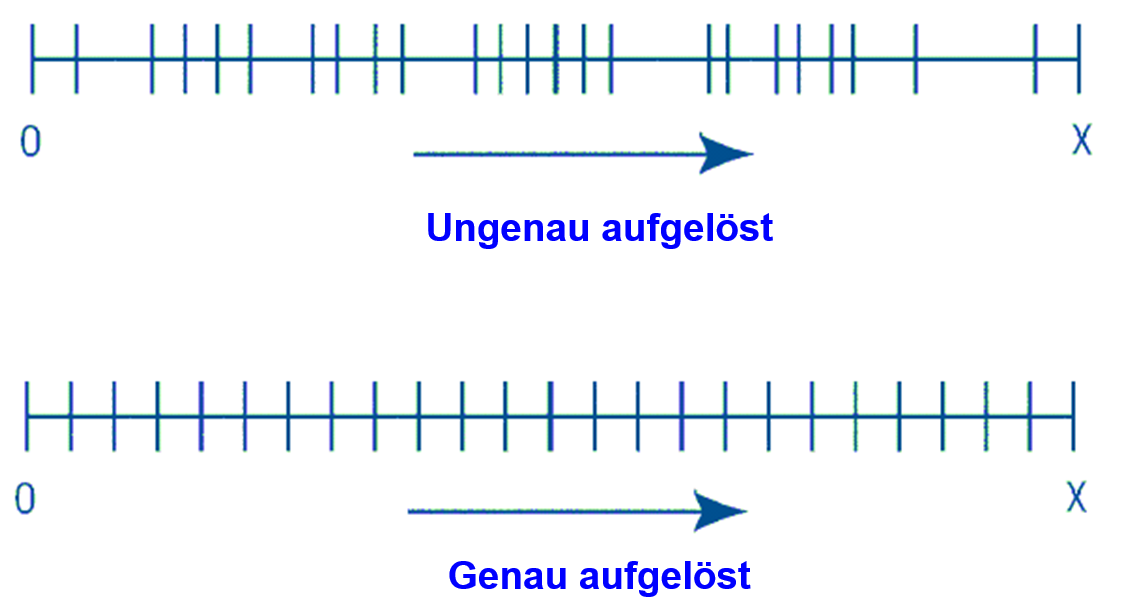
The resolution is the number of measuring segments or units of one revolution of the encoder shaft, or one inch or millimetre for linear graduation. Shaft encoders are available with direct resolution up to 10,000 pulses/revolution (PPR), and 40,000 PPR for edge detection of A and B channels, while linear encoders are available with micron resolution. In a deeper sense, the resolution of the selected encoder must be equal to or better than the requirements of the application. But resolution is not everything!
Accuracy and resolution are different things, and one is possible without the other. The following figure shows a distance X divided into 24 increments or "bits". If X corresponds to a 360° rotation of the shaft, then one rotation is resolved into 24 parts.
.
Although it is a resolution of 24 bits, the 24 parts are not the same size. This converter cannot be used for accurate position, velocity or acceleration measurement. In the second example the distance X is divided into 24 equal parts. Each increment represents exactly 1/24 of a revolution. This encoder offers both accuracy and resolution. Accuracy can be seen independent of resolution. An encoder can have a resolution of two parts per revolution, but its accuracy can still be ±6 arc seconds.